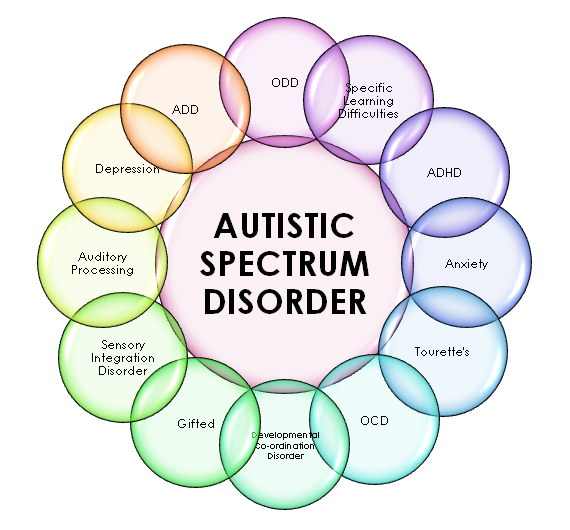The Importance of Family Members Support in the Trip with Autism
The Importance of Family Members Support in the Trip with Autism
Blog Article
Exploring Autism: Strategies for Reliable Communication and Communication
Effective communication and communication with individuals on the autism range demand a thorough understanding of their one-of-a-kind demands and choices. The complexities of these approaches reveal more factors to consider that warrant exploration, especially in exactly how they can be adapted to individual experiences and varied contexts.
Understanding Autism Range Problem
Autism Range Problem (ASD) includes a variety of neurodevelopmental conditions defined by challenges in social interaction, communication, and recurring habits. The term "range" reflects the diverse indications and varying degrees of severity experienced by individuals with ASD. While some might show significant problems, others might show high-functioning attributes, enabling better independence in every day life.
The beginning of ASD usually takes place in early youth, with signs frequently well-known by age two. Early signs might include postponed speech development, limited eye contact, and problems in recognizing social hints. Although the precise etiology of ASD remains unclear, study suggests a combination of hereditary and environmental factors plays a vital function in its advancement.
People with ASD often have distinct staminas, such as heightened attention to detail and phenomenal memory abilities. Nevertheless, they might deal with recognizing abstract concepts and handling adjustments to regular. As a result, interventions and assistance customized to private requirements are vital for cultivating interaction and social skills. Acknowledging the complexity of ASD is vital for promoting awareness, approval, and effective techniques that facilitate purposeful interactions with people on the range.

Significance of Clear Communication
Efficient interaction is crucial for cultivating understanding and link, specifically for people with Autism Spectrum Problem (ASD) Clear interaction not only helps with social interactions but also enhances the individual's capability to express their emotions, needs, and ideas. For people with ASD, the subtleties of language can typically be testing; as a result, making use of uncomplicated and unambiguous language is necessary.
Moreover, clear communication helps reduce disappointment and stress and anxiety that may emerge from misunderstandings. When messages are shared in a direct and constant way, individuals with ASD are much better outfitted to interpret details properly, which can considerably improve their social interaction and participation in different settings.
Establishing routines and using visual assistances can additionally reinforce clear communication. These techniques provide people with predictable structures that aid understanding and retention of details. Additionally, proactively being and paying attention patient during communications advertises a supportive setting where individuals with ASD really feel valued and comprehended.
Ultimately, prioritizing clear interaction not only encourages people with ASD yet additionally fosters even more meaningful links with their peers, caretakers, and the broader neighborhood, paving the way for joint relationships and comprehensive interactions. - autism
Non-Verbal Communication Techniques
Interaction prolongs past words, and for people with Autism Range Disorder (ASD), non-verbal hints play a substantial my blog role in communications. Non-verbal communication strategies can include faces, motions, body movement, and eye call, all of which function as important parts for sharing emotions and purposes.
Understanding and analyzing these non-verbal signals can boost interactions with individuals with ASD. A cozy smile or open position can produce a welcoming atmosphere, urging involvement. Making use of visual help-- such as image cards or symbols-- can connect communication gaps and assist share messages much more efficiently.
It is likewise crucial to be conscious of individual space, as people with ASD may have various comfort degrees regarding closeness. Observing their responses to physical closeness can inform ideal adjustments.

Developing Helpful Settings
Creating a supportive setting is essential for fostering favorable interactions and enhancing the health of people with Autism Range Condition (ASD) Such environments can dramatically decrease anxiousness and create a feeling of security, enabling individuals to reveal themselves more easily.
To attain this, it is important to consider sensory level of sensitivities that people with ASD might experience. Customizing the physical room to include soft lights, minimal history sound, and comfy seats can create a soothing ambience. In addition, making use of constant regimens and clear visual routines more helpful hints can aid individuals anticipate changes and minimize uncertainty, more promoting comfort.
Social areas ought to be structured to lessen overwhelming stimulations while giving possibilities for involvement in favored activities. Facilitating areas marked for peaceful time can additionally act as a sanctuary throughout minutes of stress and anxiety. Importantly, incorporating aspects of selection empowers individuals, permitting them to work out company in their setting.

Motivating Social Communications
Cultivating social communications among people with Autism Spectrum Problem (ASD) calls for deliberate approaches that focus on comfort and engagement. Developing foreseeable regimens can help in reducing stress and anxiety, making social settings much more approachable. Creating structured settings with specified obligations and functions allows individuals to engage without the overwhelming stress of disorganized social characteristics.
Including rate of interests and staminas into social activities can offer as a catalyst for interaction. Arranging team tasks around shared hobbies or topics of attraction can assist in all-natural conversations and links. Furthermore, making use of aesthetic assistances, such as pictorial routines or social manuscripts, can help in recognizing social cues and assumptions.
Designing appropriate social actions is vital - autism. Peers and adults should show reliable interaction strategies, consisting of energetic listening and turn-taking. Role-playing scenarios can also provide a secure room for people to practice these abilities
Lastly, promoting peer relationships with comprehensive methods is necessary. Motivating comprehensive playdates or team trips can produce opportunities for socializing in a comfy setting. By carrying out these instructors, methods and caregivers can considerably improve social interactions for people with ASD, promoting their overall social growth and wellness.
Final Thought
In verdict, efficient communication and communication strategies are vital for supporting individuals with Autism Spectrum Disorder. Inevitably, these techniques equip people with next autism to browse social landscapes, advertising their general well-being and enabling the development of long-term connections.
Effective interaction and communication with people on the autism range require a comprehensive understanding of their unique demands and choices. Clear interaction not just facilitates social communications but also improves the individual's capability to express their ideas, needs, and emotions.Promoting social communications among individuals with Autism Spectrum Problem (ASD) requires willful techniques that prioritize comfort and interaction. By carrying out these caregivers, methods and educators can dramatically boost social communications for people with ASD, advertising their general social development and health.
In conclusion, effective interaction and interaction approaches are crucial for supporting individuals with Autism Range Problem.
Report this page